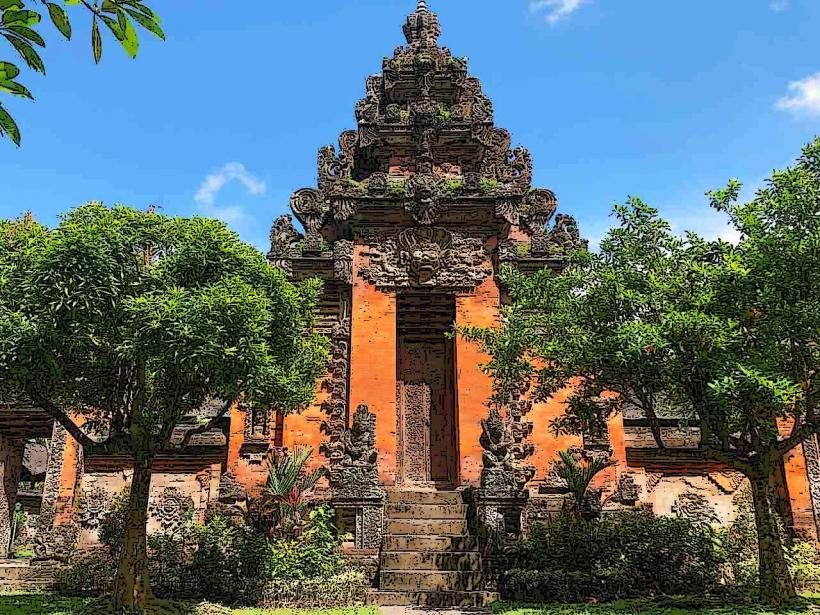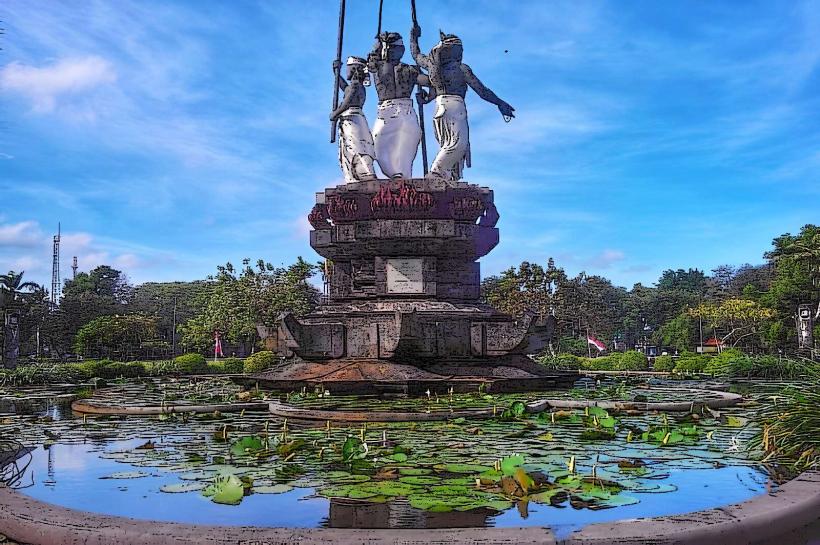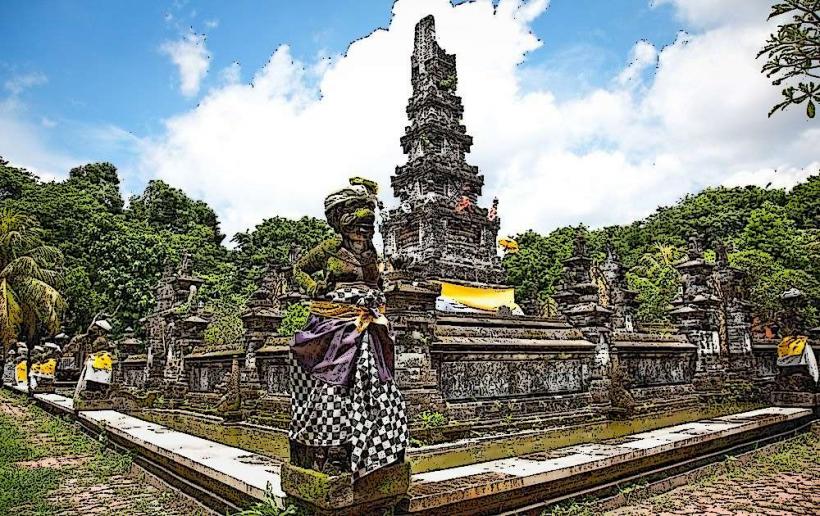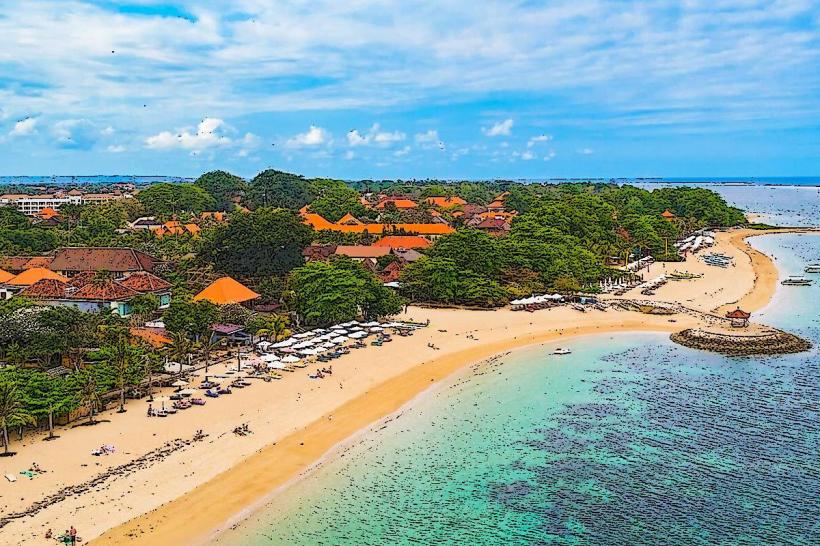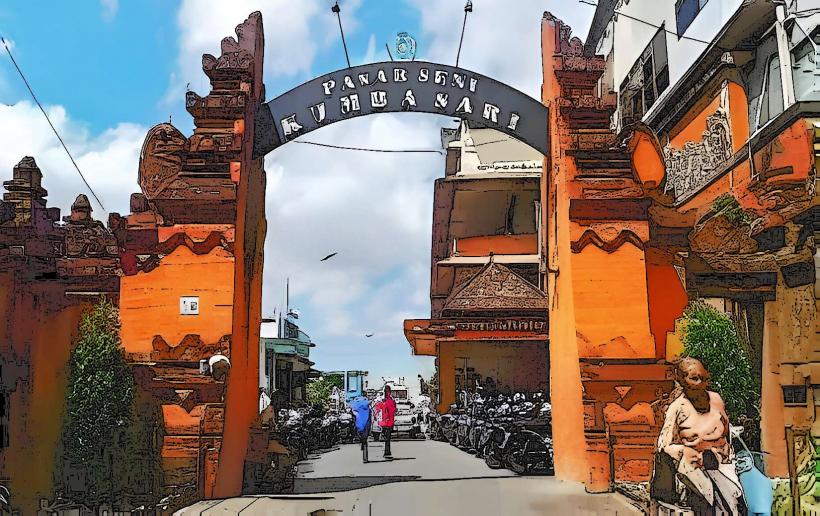Information
Landmark: Bajra Sandhi MonumentCity: Denpasar
Country: Indonesia
Continent: Asia
Bajra Sandhi Monument: The Symbol of Bali's Struggle and Cultural Heritage
The Bajra Sandhi Monument is a significant landmark located in Denpasar, the capital city of Bali, Indonesia. This monumental structure is dedicated to the struggles of the Balinese people throughout their history, particularly their resistance against colonial rule and their perseverance in maintaining their cultural identity. The monument stands as a symbol of the strength, resilience, and spirit of the Balinese people, showcasing both their history and rich cultural heritage.
1. Overview of Bajra Sandhi Monument
Location:
- The Bajra Sandhi Monument is located in the Renon area of Denpasar, Bali, within Puputan Square (Lapangan Puputan). The monument is easily accessible and stands prominently amidst lush greenery, making it an ideal place for visitors to learn about Balinese history and culture.
Meaning of Bajra Sandhi:
- The name Bajra Sandhi is derived from two words: Bajra, meaning “bell” or “vajra” (a thunderbolt, symbolizing power), and Sandhi, which refers to a “place” or “a gathering.” Together, the term symbolizes the fighting spirit and unity of the Balinese people. The monument represents the battle for independence and the dedication of the Balinese people to their customs, traditions, and religious values.
2. Architecture and Design of Bajra Sandhi Monument
Distinctive Shape:
- The design of the Bajra Sandhi Monument is inspired by the shape of a traditional Balinese bell (vajra) and a temple tower. The monument is a multi-tiered structure with a central dome and several smaller towers. It stands at a height of approximately 20 meters, and the dome-shaped structure symbolizes the sacred mountain in Balinese cosmology, which holds spiritual significance.
Symbolic Elements:
- The monument is adorned with intricate carvings, sculptures, and reliefs that depict various scenes from Bali's historical past, including the island's battles, religious practices, and cultural rituals. The carvings illustrate the spiritual strength and resilience of the Balinese people, as well as their dedication to harmony and unity.
Four Main Sections:
- The monument consists of four main sections that represent the island's philosophical beliefs:
- The Base: The lower part represents the struggle of the Balinese people against colonial forces.
- The Central Part: This section symbolizes the continuation of the struggle and the spiritual victory of the Balinese people.
- The Upper Part: The upper part signifies the elevation of consciousness and moral integrity of the Balinese people.
- The Dome: The dome at the top is the symbol of divinity and eternity, representing the ultimate goal of spiritual and cultural freedom.
3. Historical and Cultural Significance
Commemoration of Bali’s Struggle:
- The Bajra Sandhi Monument was built to commemorate the Puputan Badung, which was a massive resistance movement led by the Balinese against the Dutch colonial rule in 1906. The Puputan (which means “fighting to the death”) saw Balinese warriors and their royal families fighting Dutch forces in a heroic but tragic final stand. The monument also celebrates Bali's long history of resistance, reflecting the island's dedication to its cultural values.
Cultural Preservation:
- In addition to commemorating historical events, the monument also serves as a place for the preservation of Balinese culture and tradition. It stands as a reminder of Bali’s ongoing efforts to uphold its customs, religion, and heritage, even in the face of external influences.
Symbol of Balinese Unity:
- The Bajra Sandhi Monument embodies the unity and strength of the Balinese people. It reflects their belief in working together for a common cause, whether it is fighting for independence or maintaining their cultural identity. The monument represents solidarity, resilience, and the indomitable spirit of Bali’s people.
4. Museum Inside the Monument
Bajra Sandhi Monument Museum:
- Inside the monument is a museum that offers visitors an opportunity to learn more about the history and cultural significance of Bali. The museum features a collection of historical artifacts, photographs, and diagrams that showcase the island’s struggles and triumphs, as well as its rich traditions and religious practices.
- The museum also explains the philosophy behind the monument’s construction, highlighting the Balinese ideals of balance, spirituality, and respect for nature.
Reliefs and Exhibits:
- The museum’s walls are adorned with detailed reliefs that depict Bali’s past, including the Dutch colonial era, ancient traditions, and important historical figures. The exhibits also provide context for the Puputan Badung and other significant events in Bali’s history.
5. Visitor Experience at Bajra Sandhi Monument
Scenic Views:
- From the top of the monument, visitors are treated to breathtaking views of Denpasar and the surrounding area. On clear days, you can see the mountains, coastline, and cityscape of Bali, making it an excellent spot for photography.
Peaceful Environment:
- The monument is situated in Puputan Square, a spacious park that provides a tranquil environment for reflection. Visitors can relax in the well-maintained gardens or take a leisurely walk around the monument, appreciating both its cultural significance and natural beauty.
Opening Hours and Accessibility:
- The Bajra Sandhi Monument is generally open to the public daily, typically from 8:00 AM to 6:00 PM. Entry fees are relatively affordable, making it accessible to most visitors. The site is easy to reach from the central areas of Denpasar and is suitable for travelers of all ages.
Cultural Events:
- Throughout the year, the monument hosts various cultural events, including traditional dance performances, religious ceremonies, and commemorative services for important historical milestones. Visitors may have the opportunity to witness these cultural expressions during their visit.
6. Conclusion
The Bajra Sandhi Monument is more than just a historic landmark; it is a symbol of Bali’s resilience, spiritual strength, and cultural preservation. With its unique architecture, rich historical significance, and the informative museum inside, the monument serves as a powerful reminder of the island's long-standing struggles and triumphs. For those seeking to understand the soul of Bali and its people, the Bajra Sandhi Monument offers an insightful and emotional journey through the island’s past, present, and future.

